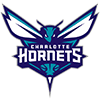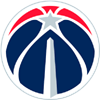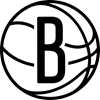Most of tomorrow's standout players from the 2023 rookie class were selected at some point in the seven rounds of the NFL Draft. Just the same, there were also likely some eventual big names that slipped through the cracks. All rookie classes feature some assortment of undrafted players who emerge as valuable contributors in the future, and some undrafted rookie classes even feature a future star or two. Brock Purdy was one pick away from going undrafted last year, of course, while players like Rashid Shaheed and Jaylen Warren have already proven themselves useful contributors.
This article will quickly run through some of the biggest names among the undrafted running backs (seven), wide receivers (seven) and tight ends (one), breaking down their situations with their NFL teams.
RUNNING BACK
Keaton Mitchell, East Carolina (5-8, 179) → Baltimore Ravens
Mitchell's tiny frame was understandably a concern to the NFL, but if he can demonstrate a firm grasp of the Ravens offense and earn immediate special teams reps then he could push for a roster spot even after going undrafted. Mitchell has rare speed and has strong vision to pair with that speed, making him uniquely dangerous with the football. The question for Mitchell is whether he can contribute enough between those rare carries to justify a roster spot. If Mitchell can become a special teams regular then he might get an eventual audition in a change-of-pace role like the one Justice Hill has held, and if Mitchell gets that shot he just might do something with it.
Sean Tucker, Syracuse (5-9, 207) → Tampa Bay Buccaneers
An unspecified medical concern blocked Tucker from participating in athletic testing at the combine, and for some reason he didn't test at the Syracuse pro day, either. It's concerning not just for the health reason, but also because as a lighter back it's important for Tucker to demonstrate objectively above-average athletic metrics to offset the frame deficit he faces against bigger runners, many of whom are just as fast or faster than Tucker anyway. If Tucker's health is assured and his athletic metrics are sufficient, however, then his skill set as a running back is almost beyond question. It's a thin line between a Myles Gaskin and a Gio Bernard, and right now we lack the information that would help pinpoint Tucker's placement on that spectrum.
Luckily for Tucker either way, the Buccaneers lack running back talent and depth both. Rachaad White is the presumed starter, but the likes of Ke'Shawn Vaughn, Chase Edmonds and Patrick Laird are not especially intimidating.
Xazavian Valladay, Arizona State (5-11, 204) → Houston Texans
Valladay was a successful starting running back at both Arizona State and before that Wyoming, averaging nearly 100 rushing yards per game over four years from 2019 to 2022. He has a workhorse skill set and mindset but probably not the frame or running style to do much inside running at the NFL level. Even if not a starter, Valladay should be committee-viable since he has a well-rounded game. In Houston he will try to dislodge Mike Boone as the RB3 behind Dameon Pierce and Devin Singletary.
Christopher Brooks, BYU (6-1, 216) → Miami Dolphins
Brooks – formerly Brown – is a big running back who made a lot of big plays for BYU in 2022 (817 yards and six touchdowns at 6.3 yards per carry) after previously showing well as more of a workhorse grinder at California (208 carries for 914 yards and eight touchdowns in 2019). The Dolphins might want to consider adding a power element to their backfield with mostly speed specialists otherwise, and Brooks might be good enough for such consideration.
Deneric Prince, Tulsa (6-0, 216) → Kansas City Chiefs
While his production was only sporadic at Tulsa, Prince generally provided good returns whenever his playing time spiked, and he turned heads at the combine by logging a 4.41-second 40-yard dash. That sort of 40 time will always be notable for a running back, and especially one with above-average weight like Prince. It's a profile somewhat similar to Isiah Pacheco, though Prince is less battle-tested than Pacheco was out of Rutgers.
Tiyon Evans, Louisville (5-10, 225) → Los Angeles Rams
Evans is all raw material at this point, but as far as raw materials go he has potentially useful tools for skill development. Evans has an uncommonly dense build for a running back, and his 4.52-second 40 on that frame indicates a good amount of punch at a low center of gravity. Nearly everything else is a question with Evans in the meantime, especially when it comes to ball security and passing-down functions, but if the light goes on Evans could emerge as a capable runner down the road.
Mohamed Ibrahim, Minnesota (5-8, 203) → Detroit Lions
Ibrahim has a workhorse mindset and knows how to pace himself over a heavy workload, but limitations with his athleticism and frame might make it difficult for Ibrahim to earn a volume opportunity in the first place. Small running backs, even the otherwise talented ones, almost always need to be fast to get a long look from the NFL. Players like Ibrahim and former Buffalo standout Jaret Patterson have an uphill climb their heavier peers get to skip. Should Ibrahim become a starter, he will be quite the attraction for sports bettors as futures release. You can bet on these futures by using the top betting apps.
WIDE RECEIVER
Jalen Moreno-Cropper, Fresno State (5-11, 172) → Dallas Cowboys
Moreno-Cropper chose to play at Fresno State over more notable programs like Oregon and Utah, and once he got to Fresno State he dominated. Fresno quarterback Jake Haener was selected by the Saints in the fourth round, but you can bet that never would have happened if not for Moreno-Cropper serving as Haener's WR1 with the Bulldogs. Moreno-Cropper produced from scrimmage in a way very few players do in college football over however many years you'd like to look, and his 4.40-second 40-yard dash proved he has the speed to continue running away from defenders at the pro level.
Moreno-Cropper is very skinny at just 172 pounds, unfortunately, and that was doubtlessly held against him by NFL evaluators. Because he demonstrated plus speed and because his production strongly implies plus skill set, though, Moreno-Cropper should be able to overcome his weight deficit. The 2021 UCLA pass defense was one of the best in the country and certainly the Pac-12, yet Moreno-Cropper took down the Bruins by catching 14 passes for 141 yards and a touchdown on 16 targets in a 40-37 upset victory. What more could he have done to convince anyone?
C.J. Johnson, East Carolina (6-2, 224) → Seattle Seahawks
Johnson's career at East Carolina was a turbulent one, and the low periods were concerning enough that he slid through the draft despite showing uncommon ability at his high points with the Pirates. Johnson produced over 900 yards as a true freshman and appeared on track for stardom before the turbulence hit, with Johnson demonstrating a memorable combination of downfield ball tracking and after-the-catch ability for a receiver over 220 pounds. Johnson's talent might or might not show up at the NFL level, but due to a lack of long speed Johnson might best compete for reps as a Big Slot type.
Dontay Demus, Maryland (6-3, 212) → Baltimore Ravens
Demus had cruel injury luck at Maryland and heads into the NFL with knee concerns in particular, but if Demus' luck improves then he could be a steal for Baltimore. Demus is especially interesting because he possesses rare hands and ball tracking ability for someone with such long reach. His 34 and 1/4-inch arms might be unwieldy for someone with worse coordination and flexibility than Demus, but his sudden and reliable hands allow him to reorient his enormous catch radius, in traffic, on short notice. As a Big Slot he could emerge as something like a Marques Colston type in a dream scenario.
Rakim Jarrett, Maryland (6-0, 192) → Tampa Bay Buccaneers
Jarrett was a five-star recruit who produced reasonably well at Maryland, but he got by more on his raw athleticism than polish toward wide receiver tasks. The concern for his pro projection is that, as the athletes on defense get better than what Jarrett saw at Maryland, his prior athletic advantage could fade and leave him with no calling card. With the Buccaneers he might catch on as developmental depth.
Bryce Ford-Wheaton, West Virginia (6-4, 221) → New York Giants
Ford-Wheaton is as toolsy as it gets, boasting a 4.38-second 40-yard dash to go with a 41-inch vertical and 129-inch broad jump. That Ford-Wheaton struggled to produce consistently at West Virginia indicates a skill set deficit, but if he can improve his skills then his otherwise exceptional athleticism could allow him to improve quickly.
Jason Brownlee, Southern Mississippi (6-2, 198) → New York Jets
Brownlee doesn't have much downfield speed (4.59-second 40) but his catch radius is exceptional thanks to his wingspan (33 and 3/4-inch arms) and jumps (39.5-inch vertical, 131-inch broad jump). His dependence on making contested catches might have been why Brownlee's catch rate was so poor at Southern Mississippi, but it might be interesting to ponder how he might look if he faced less defensive attention. He should have a good chance to make the Jets roster if they keep six receivers.
Matt Landers, Arkansas (6-4, 200) → Seattle Seahawks
Landers was a late bloomer in college after initially arriving to Georgia as a coveted recruit. The lanky speedster couldn't catch on in four years at Georgia before playing for Toledo in 2021 and Arkansas in 2022. Landers finally broke out with Arkansas but that it was his sixth season means the skill set indication of the production is ambiguous at best. When skill is ambiguous or a deficit it's necessary for a prospect to possess plus tools, which Landers luckily does. His 4.37-second 40, 37-inch vertical and 130-inch broad jump give him the downfield range to credibly threaten on fly and post routes, which is Landers' best chance at a calling card.
TIGHT END
Blake Whiteheart, Wake Forest (6-4, 247) → Arizona Cardinals
Whiteheart might have gone undrafted, but his athletic profile is potentially similar to players like Dalton Kincaid and Greg Dulcich. Whiteheart ran the same 40 time as Dulcich at four pounds heavier, for instance, and we don't even have testing data on Kincaid. On the other hand, Whiteheart had poor production at Wake Forest, only playing late in his career and not drawing much usage even then. It will be interesting to see if Whiteheart may have been held back by the Wake Forest scheme, because if Whiteheart can pair skills with his previously demonstrated athletic tools then he could emerge as a starter in the distant future. With Arizona, though, he's unlikely to ever displace Trey McBride.
One of the best aspects of the NFL Draft and rookies is you can get a lot of value for them when placing wagers. Be sure to check out the best sports betting sites in order to get started, and redeem the top sportsbook promo codes to earn bonuses.









































